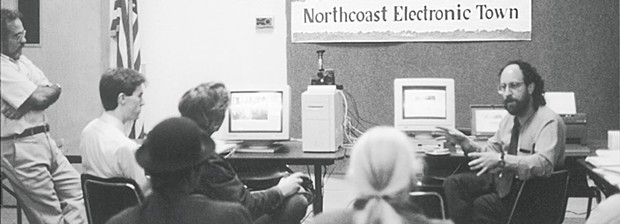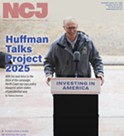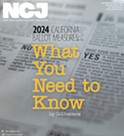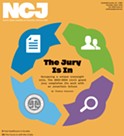Internet Dreamin'
Humboldt County's online evolution is far from over
By Grant Scott-Goforth [email protected] @GScottGoforth[
{
"name": "Top Stories Video Pair",
"insertPoint": "7",
"component": "17087298",
"parentWrapperClass": "fdn-ads-inline-content-block",
"requiredCountToDisplay": "1"
}
]
Clad in a busy floral tie, white shirt and slacks, Larry Goldberg sits on the handrail of a single lane wooden bridge, with a bulky computer on his lap and a cellular phone the size of a dictionary beside him. The dirt road behind him curves in front of a barn and a logger's hard hat sits on a signpost with a hastily scrawled advertisement: "HAY."
This stranger-in-a-strange-land scene graced the C Section of the May 15, 1994 Los Angeles Times, and plugged Goldberg's then-novel idea: an extension of Humboldt County's economy and marketplace of ideas entirely online. "This is the community of the future," the then-41-year-old resident told the LA Times.
It's been 20 years since Goldberg started the North Coast's first electronic town, a text-only social media prototype that predated web browsers as we know them. While news reports of the technological breakthrough contain a comically dated sense of wonder, they reflect a burgeoning desire for technology that would, in two short decades, completely change the way Humboldt County and the world operate.
The Internet has altered Humboldt's schools, libraries and public spaces; shifted the way we do business and receive health care; and, whether vitriolic or compassionate, given a voice to every resident of the county. To a certain extent, it's allowed residents to shape not only their personal online identities but the complexion of our community. But, as with any technology, it's not without its drawbacks and, as our tiny rural communities finally come online, there are industry actions that could have big implications for small counties like ours.
"Hang on to your skivvies — it just became easier for North Coast residents to go to work in their underwear," read a 1994 Times-Standard report on Goldberg's "North Coast Electronic Town." That and other stories of the time trumpeted now-archaic possibilities for the Internet: access to 100 plays and speeches; online classified ads; chat rooms offering discussions on local politics; teachers in Arcata and Australia exchanging reports. Simplistic as those offerings now seem, they mirror some of the most basic and popular functions of the modern Internet. And Humboldt County, like most of the world, is now dependent on those functions. "You talk about the economic impact," Goldberg said over the phone recently. "I'd say it's profound, but I don't know that there's any way to quantify it."
Goldberg's interest in computers began when he was able to tool around with one at his Manhattan high school in the late '60s. At that time, he said, a computer's practical applications for the average consumer were nearly nonexistent. "The idea that a computer could do anything for you was kind of unheard of," he said.
But by the early 1990s, when Goldberg was considering how to connect Humboldt County to the Internet, he saw potential in the web. The county's timber wars, and portents of economic doom with shrinking of the industry echoed around the county. But Goldberg wasn't buying it.
"I told people if [timber companies] were to disappear tomorrow we'd still be here," Goldberg said — an assessment he stands by. "The economy has shifted."
Bob Morse, who worked with Goldberg in the '90s, said small business has thrived in the decline of large industries and rise of the Internet.
"I get a sense with the decline of other kinds of industries a lot of people have taken the entrepreneurial route to make money and stay here," Morse said. "And the Internet has really facilitated that because it's the cheapest way to reach a world market. Before the Internet, it was virtually impossible to get known outside of this area without huge expense."
Telecommuters can enjoy Humboldt's quality of life while working for distant employers, Goldberg said, reiterating one of the benefits of a connected North Coast that he and others touted at the inception of the "electronic town."
"There's a ton of stuff up here that doesn't have to do with timber or fishing or any kind of resource extraction. People just like living up here," Goldberg said.
But there have been drawbacks to an increasingly online world, and they go beyond a marketplace for scams, surveillance and child porn. "It changed the whole way we think of retail," Goldberg said. While local sellers may be able to find a global market, local shoppers can go online to find prices sometimes far below those offered by most local stores. Goldberg himself has been the victim of one such double-edged sword. He built a successful tech support company in Arcata in the early 2000s, employing 100 people at one time. But, before long, other tech support companies outsourced jobs to India and other countries that could pay employees far less than U.S. minimum wage. Goldberg was priced out of business.
"Virtually anything you can do someone else can do cheaper," he said. "We've evolved from being lifelong employees to becoming free agents. It's a vicious world. The pressure is put on pushing prices down, and the Internet has made that unbelievably easy."
The same may threaten the U.S. model of health care. Another boon of the Internet touted by Goldberg is telemedicine: the ability to speak with doctors and specialists without having to travel; and the ability for doctors to be on call without having to rush into the hospital in the middle of the night. "The day is coming where you don't need to see a doctor in America to get a diagnosis," Goldberg said. "A doctor in Mexico, in India, in many respects is as good as a doctor here at a fraction of the cost. You're competing with the rest of the world."
Humboldt's rural communities are largely online with broadband access now. While service can be slower and harder to come by, even communities in the northern, eastern and southern reaches of the county have options, whether it's satellite or fiber optic cable.
Morse said that the information pipeline connecting the North Coast to the rest of world is going to have to grow. The demands on broadband Internet are only going to increase as technology improves.
And he's disappointed that a push for municipal wireless several years ago was never realized. "It seems like costs have come down considerably," he said. "It might be time to revisit that."
More concerning, said Sean McLaughlin, executive director of Access Humboldt, is how Internet service providers will act as gatekeepers to the broadband. Those companies' decisions, he said, could have the greatest impacts on rural areas like Humboldt County.
McLaughlin said getting broadband to Orleans and Orick — and the whole North Coast — evidenced a lot of activism and community development on the part of its proponents.
Access Humboldt is a broadband-based media center that works with North Coast cities and Humboldt County to increase public access to the Internet. That means working with government agencies and keeping tabs on the regulatory environment and subsidies that support broadband infrastructure.
In recent years, the region's stability has improved — crucial in a world where not only commerce and communication, but public safety, rely on a functioning Internet. Humboldt County's redundant fiber cable, completed in 2012, increased the region's security, but a spur of cable going north of the hub to Trinidad leaves the community susceptible to blackouts. An ideal network, McLaughlin said, has multiple lines to each regional hub, creating a network loop. It's getting better. The Karuk and Yurok tribes are currently putting a fiber optic cable from Orleans to Big Lagoon, and McLaughlin hopes that will extend back to Willow Creek or Weaverville.
As the county becomes more wired, McLaughlin's concerns turn toward whether the county and its small, local content creators will be able to resist corporate influence and maintain what he calls "net neutrality."
Internet service providers are poised to negotiate large contracts with content providers, which could mean, for example, fast downloads for Disney movies, if Disney worked out an agreement with your Internet provider. Anything non-Disney would be delivered at second-rate speeds and reliability. That's problematic for tiny content producers, like Access Humboldt, who offer locally produced programs and public meetings online.
"For the end user it should cost the same to watch a board of supervisors meeting or an episode of 'Downton Abbey,'" McLaughlin said. "The future issues are going to be less and less basic access to a network and more the qualities of a network. Is it open? Is it affordable? Is it locally accountable?"
And even with a redundant line, McLaughlin said, there are deficiencies when it comes to local disaster preparedness. He said an Internet provider like Suddenlink routes traffic through large regional servers out of the area. If there's a problem at that end, there's no local link, and computers in Arcata and Eureka can't talk to each other. The current model focuses on efficiency over public safety considerations, he said.
Finally, McLaughlin said, the telecommunications industry carries a lot of influence over how public subsidies are spent. Orick School has a fast broadband connection, he explained, but rules attached to the subsidies that pay for most of the service don't allow the school to share its bandwidth with the community — or even with other public agencies or institutions. McLaughlin sees that as a waste of bandwidth and a redundancy in service.
"The industry has made it difficult for public agencies to share [service] because they get to sell it five times instead of one," he explained. "You cannot underestimate the influence of telecommunication and cable industries on a regulatory environment. That's why places like Humboldt get underserved, because there's not enough profit for them."
The passage of 20 years has left modest dreams like reading Shakespeare online in the dust. Goldberg, who started Humboldt's first electronic town, has moved out of technology and into environmental advocacy.
"In some respects I was a pioneer but now I'm just a follower trying to keep up with it all," he said. He still sees untapped potential in the Internet, even if his visions range into the realm of science fiction. He predicts that eventually people will be hardwired to a vast neural network — text messages will be as antiquated as dial-up modems are now. "You'll be able to think it, and friends everywhere in the world will know what you're thinking," he said. "It's going to be an evolutionary leap."
He sees computers becoming self-aware — and while it's a thought he's not entirely comfortable with, he sees environmental and humanitarian potential in the concept.
"We may have to relegate decisions about climate change, community planning to computers. Because we cannot rely on people to make these decisions any longer. Because we really cannot make decisions based on the best interests of humanity."
Sci-fi dreams or prescience? It's hard to say. But imagine your skepticism 20 years ago about the news, commerce and entertainment now contained in a smartphone or laptop computer — there's no denying that those decades have made some of Humboldt County's Internet dreams a reality.
Timeline
1969 — The United States launches the Advanced Research Projects Agency, which goes online in December and connects four major universities, providing a communications network officials hope will link the country in the event of a military attack that destroys conventional communications systems. In October, UCLA student Charley Kline sends a one-word transmission to a computer at Stanford University. Kline types one world, "login," to use a Stanford computer remotely, but only the letters "l" and "o" transmit before the system crashes.
1972 — Ray Tomlinson, a computer scientist in Cambridge, Mass., introduces electronic mail.
1973 — Transmission Control Protocol/Internet Protocol (TCP/IP) — which includes File Transfer Protocol — is designed and will later become the standard for intra-computer communications.
1976 — Jimmy Carter uses electronic mail to plan events in his campaign for presidency and Queen Elizabeth becomes the first state leader to send an e-mail.
1982 — The word "Internet" is coined.
1984 — The Domain Name System (DNS) is established, providing network addresses identified by suffix, such as .com, .org, .net and .edu.
1985 — America Online debuts, offering email, electronic bulletin boards, news and more.
1989 — The first provider of dial-up Internet access, The World, starts up. Meanwhile, Tim Berners-Lee, of the European Laboratory for Particle Physics, develops what he calls the World Wide Web, a cutting-edge way of displaying and distributing information on the Internet, complete with hyperlinks, making the Internet accessible through graphic user interface.
1991 — The Internet provider Gopher becomes the first to offer point-and-click navigation.
1994 — The White House launches www.whitehouse.gov, SPAM is created and Netscape launches its first browser.
1994 — Larry Goldberg launches the "North Coast Electronic Town," an online community that acted as a precursor to today's government websites, classifieds and discussion forums.
1995 — The City of Eureka launches its first webpage.
1996 — Approximately 45 million people have started using the Internet.
1997 — The Redwood Technology Consortium, which would assist the delivery of broadband to the North Coast, is officially formed.
1998 — Google launches.
1999 — Napster is invented, Myspace.com launches and Internet shopping begins to take hold as the Internet boasts 150 million users. Pacific Bell announces project to run a fiber optic line into Humboldt County with the goal of fast Internet for all.
2000— The first widespread computer viruses begin to show up. America Online seals the biggest merger of all time, buying Time Warner for $16 billion.
2001 — Wikipedia is created and about 9.8 billion e-mails are sent daily.
2002 — 544 million people are using the Internet.
2003 — Apple Computer launches iTunes.
September, 2003 — Pacific Bell completes the Humboldt County fiber optic project.
2004 — Mark Zuckerberg founds Facebook.
2005 — YouTube launches.
December 2006 — Humboldt County's broadband cable is damaged by wind, severing service to the now Internet-dependent North Coast.
January 2007 — The cable is again damaged, this time by fire, cutting service temporarily.
April 2007 — Local agencies begin clamoring for a second fiber optic line to bring redundant broadband service to the North Coast.
June 2007 — A highway construction project damages the cable, again cutting service temporarily.
October 10, 2007 — The line is again damaged by a high way construction project.
July 2011 — Construction begins on a second fiber optic line, stretching 130 miles from Cottonwood to Eureka. The project costs an estimated $14.4 million, which was provided by grants and private funding.
November 2011 — "Who Pooped and Peed on the Bank?"
December 2011 — The second fiber optic line is completed.
November 2012 — Jimmy Kimmel makes fun of the Humboldt Institute for Interdisciplinary Marijuana Research.
April 2013 — The "Suddenlink Snipper" vandalizes Suddenlink's fiber optic cable in Humboldt for the fifth time, cutting it in multiple places and causing a temporary service outage to thousands of customers. The company offers a $10,000 reward but the vandal has not been caught.
April 2013 — People worldwide tune in to a webcam to watch eaglets born in a nest overlooking Humboldt Bay.
October 2013 — The California Public Utilities Commission approves $6.6 million for the Karuk Tribe to extend fiber optic cables through northern Humboldt and into Del Norte County.
March 2014 — The Humboldt County Board of Supervisors holds an "interactive community meeting," with supervisors and residents discussing the county budget simultaneously from five different locations around the county, while fielding questions on Twitter.
Eureka's Googles
Information courtesy of Google Trends
The top Google queries from 2004 to present from the "Eureka, CA" area:
humboldt
you
craigslist
youtube
yahoo
weather
news
games
The top image search queries from 2008 to present from the "Eureka, CA" area:
Black
Girl
Quotes
Tattoos
Love
Women
California
Dog
Beach
Pink
The top worldwide search terms including the word "Humboldt" from 2004 to present:
Humboldt county
Von Humboldt
Humboldt state
Humboldt university
Alexander Humboldt
Humboldt berlin
Alexander von Humboldt
Humboldt state university
Humboldt universitat
Humboldt craigslist
Speaking of...
-

Making Change: The Internet
Apr 25, 2024 -
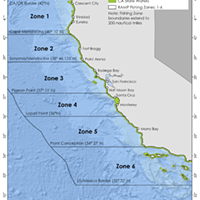
Local Commercial Dungeness Crab Season to Open in January
Dec 20, 2023 -
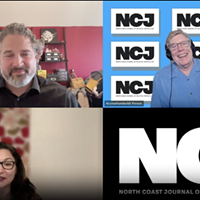
Burgers, Backpacks, Media and Weekend Recs
Sep 22, 2023 - More »
Comments (3)
Showing 1-3 of 3
more from the author
-
Flamin' Hot's Stale Corporate Propaganda
- Jun 15, 2023
-
Hell is Visiting Other People
- Sep 22, 2022
-
The Bear Roars
- Aug 18, 2022
- More »
Latest in News
Readers also liked…
-
Through Mark Larson's Lens
A local photographer's favorite images of 2022 in Humboldt
- Jan 5, 2023
-
'To Celebrate Our Sovereignty'
Yurok Tribe to host gathering honoring 'ultimate river warrior' on the anniversary of the U.S. Supreme Court ruling that changed everything
- Jun 8, 2023
